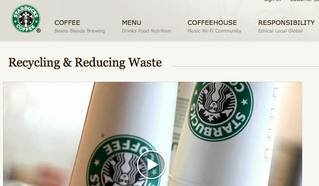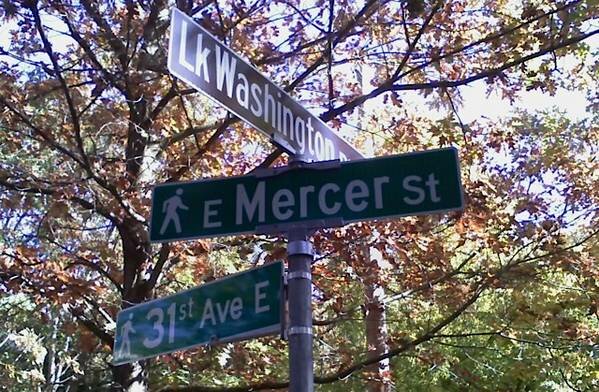 TechFlash sees afterimages of Webvan in Amazon's new Tote delivery service, but I can't help thinking of the gold standard: Kozmo.com couriers delivering lunch half an hour after I ordered it. Tote won't be quite that fast, but from a cost perspective, Amazon has one-upped Kozmo: the twice-weekly Tote service is free, and there's no minimum spend. (You do have to complete your order two days before the next delivery date.)
TechFlash sees afterimages of Webvan in Amazon's new Tote delivery service, but I can't help thinking of the gold standard: Kozmo.com couriers delivering lunch half an hour after I ordered it. Tote won't be quite that fast, but from a cost perspective, Amazon has one-upped Kozmo: the twice-weekly Tote service is free, and there's no minimum spend. (You do have to complete your order two days before the next delivery date.)
If you order something from Amazon and you'd like them to deliver it the next time they're delivering in your neighborhood (the delivery days are zip code-specific), they'll truck it on over. The first zip to get Tote is 98112. The Tote bags are weather-resistant and reusable, and one way you can reuse them is to return items if there's any problem. Get the Tote FAQs here. (Perhaps you'd like to order a discounted Kindle? Even the Kindle DX has a lower price.)
 Meanwhile, today inaugurates 1) a City of Seattle ordinance mandating that all single-use food service packaging at restaurants and grocery stores be either recyclable or compostable, and 2) a fully operational
Meanwhile, today inaugurates 1) a City of Seattle ordinance mandating that all single-use food service packaging at restaurants and grocery stores be either recyclable or compostable, and 2) a fully operational battlestar Starbucks recycling and composting program that incorporates front-of-store waste, too (i.e., there are more bins out front).
You've probably seen evidence of this, since Starbucks has been rolling out the new program at its 90 Seattle stores over the past month. The city's goal is to keep 6,000 tons of packaging and compostable waste out of landfills each year. Starbucks' goal is to get front-of-store recycling into all company-owned locations by 2015. (Their paper cups will head back to the plant for a second life as paper napkins.)...
Seattle squirrels even pitch in on recycling.
Despite the obvious "fixie gap," when Sightline added up greenie points for the Northwest's (they call us "Cascadia") three largest cities, Seattle came in ahead of Portland. Vancouver, B.C., was greenest of them all but that is to be expected, as they are Canadians and don't have money to waste.
Sightline's Alan Durning says our northern neighbors have:
...the highest urban density, the most cycling, the most walking, the most transit ridership, the fewest cars—and the least driving—per person, the lowest greenhouse gas emissions per capita by far (thanks to its car-lite ways and to its carbon-free electricity), the lowest teen birth rate and family size, the highest life expectancy, and the lowest poverty rate.
Overachievers.
Portland, the conventional wisdom runner-up, with those green jobs and sustainable development, may have been resting on their laurels, unwisely focusing on growing facial hair, getting sleeve tattoos, and loading up on terrific places to eat brunch. They took their eye off the ball. And now they are paying the price.
In health (we live three years longer), economy (well, we knew that), sprawl (on a city-limits basis Seattle is more compact), and energy (hydropower + walking = win!), we lead Portland. We're tied on population replacement.
(Now, to be fair, there are other ways of contrasting the two cities. Portland has an NBA team and an income tax. Seattleites pay sales tax and watch the Sounders.)
But we can't let our second place achievement go to our heads. Durning closes by pointing out that none of the three cities is close to "sustainable." We still have super-size carbon footprints, still pollute like crazy, and still run through natural resources faster than they can replenish.
It's like a bad advertising slogan: "Imagine yourself in a Mercury." Except this time it's "Imagine the mercury in you." Washington Toxics Coalition has produced a new study of pregnant mothers that illustrates just that. As the PostGlobe reports, Seattle mom Kim Radtke discovered eleven chemicals were coursing through her bloodstream, and "rated worst among nine West Coast women tested for a particular class of chemicals: perfluorinated compounds (PFOS)."
Every woman tested was found to have been exposed to , found in such things as the lining of food cans. Each woman had two to four so-called “Teflon chemicals” (All had detectable levels of , a chemical found in long-lived fish like tuna that is known to harm brain development. And every woman was exposed to at least four (pronounced THAL-ates).
This kind of news is just terrible for the chemicals industry, who have been on the lookout for a young, attractive pregnant woman willing to go on record about how the convenience of BPA outweighs its role as an endocrine disruptor. [Per Harper's magazine, subscription-only viewing] So far, no takers.
The hard news is voiced by Molly Gray, a Seattle midwife and naturopathic physician: "The answer I received from this study is that the fight is too big for just one person."
Seattle blog Sightline is running a series called "Sustainababy," about the real world challenges of mothering and sustainability, from polluted air to baby clothes. Anna Fahey writes that her eyes have been opened, too, by the impossibility of personal choice making a dent in her child's exposure to pollutants and contaminants. In a very real way, energy and air quality policy are where mothers need to focus their outrage, but that's not how anyone talks to moms.
The emphasis--and burden--is always on the mother to educate herself personally, to learn what to avoid, and to build a bubble of clean green living for the baby to enjoy.
But no mother goes out to shop for lead, carbon monoxide, or nitrogen dioxide. That comes for free with the air around her. Holding her breath for nine months is longer than most yogis can manage, and they really practice at it.
 Photo courtesy of Benjamin Lukoff
Photo courtesy of Benjamin Lukoff
Reader Lucia asks: "Do you guys know what's going on with the city changing over from green street signs with white lettering to brown street signs with white lettering? This past week they have been doing it all over Queen Anne Hill."
I called SDOT about this mysterious development, and they referred me to the Parks & Recreation Dept. I left a voicemail with their communications person, but they haven't called back. Yet, I still know the answer: Brown street signs announce an Olmsted boulevard. The color-coordinated update was tucked away in our 2006 Bridging the Gap levy.
Am I a mind reader? Possibly. But in this case, I was searching on Flickr for photographic evidence of brown street signs, and contacted one Benjamin Lukoff about permission to use his brown street sign photo. Mr. Lukoff was amenable, and suggested if I was curious about them, I might like to read his comprehensive article on the topic. (In my defense, who reads Crosscut but the Gates Foundation?...
Most Viewed Stories
Top Rated Stories
- McDonald's Adds Insult to Injury with Local Billboard Campaign
- Zac Efron Closer Than Ever to Kurt Cobain Film Role
- Touring Seattle University's Under-the-Radar Art Collection
- Sonics Fans Receive Ounce of Flesh in the Mail, Courtesy Clay Bennett
- Conlin, Burgess Agree: We Must Welcome Our New Deep-Bore Tunnel Overlords

Most Recent Comments